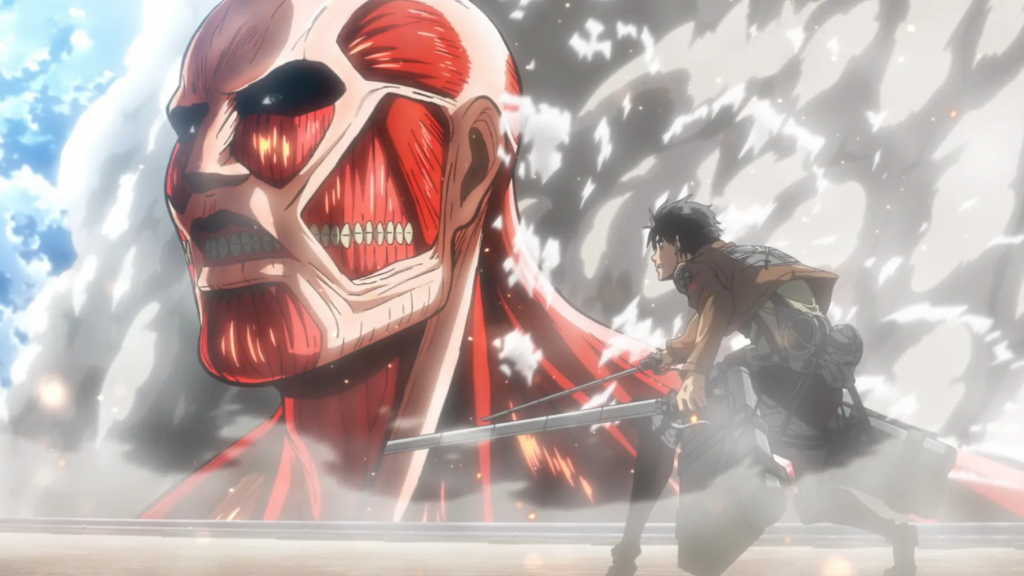
The story of WIT Studio began when George Wada, a producer at Production I.G, picked up a copy of Hajime Isayama’s manga, Attack on Titan. The story about people being stuck behind a wall resonated with him and he synchronized it with his experience as a producer. Wada had managed some memorable titles for Production I.G such as Sengoku Basara, Kimi ni Todoke, and Psycho-Pass, but it was toward the end of production for Guilty Crown in 2011 that he, and fellow I.G animation producers Tetsuya Nakatake and Kyoji Asano, became interested in building an environment filled with top-level talent. They wanted to fully dedicate themselves to working on one project at a time, which was not the case at Production I.G where they worked on multiple series simultaneously. Their goal was to produce series and films that would have high commercial potential and be of higher quality than what they were working on at Production I.G. They desired to begin building a new brand, and to do that, they needed to form their own independent studio.
Before they could even come up with a name for this new venture, they had to inform their boss, Mitsuhisa Ishikawa, the president of Production I.G at the time. Ishikawa not only gave them his blessing, but he also made them an offer to keep them in the fold. The new studio would become a subsidiary of I.G’s parent company, IG Port, which would give them creative independence while receiving financial backing and avoiding years of contract work with other studios. The producers gladly accepted Ishikawa’s offer, and with that, the Wada, Ishikawa, and Tetsuya — WIT — studio was formed.
In what Wada would later describe as “a miracle,” right as the company was coming into its own, Kodansha was in search of a studio willing to produce an anime based on the manga Attack on Titan. With one of the founders already familiar with the manga’s strong narrative, and all of them agreeing that the action found in the source material was a perfect fit for the kind of high-quality animation they were interested in producing, they were quick to express interest in producing the anime. Impressed with the work the studio had done for Production I.G, the publisher secured a deal with WIT to animate the series. Just a few months after moving into its first office — a small windowless room inside of Production I.G — WIT began laying the foundation for its debut anime series.
Attack on Titan’s first season follows Eren Yeager, his best friend Armin Arlert, and his adopted sister Mikasa Ackerman, denizens of a massive walled city, as they train and fight to prevent humanity’s extinction at the hands (and mouths) of colossal humanoid monsters known as Titans. Enormous creatures with human-like attributes, the Titans’ presence led mankind to build three 40-meter-tall concentric structures for protection. The season’s art design simultaneously showcases the beauty of the world, while also highlighting the Titans’ abnormal place in it. Asano’s sharp character designs, which were chosen after a studio-wide contest, were easy to animate thanks to their thick line work, and by giving them more expressive features, the characters could really sell the impact of each fallen comrade or small victory. Takaaki Chiba, who performed a number of roles for the production, designed the Titans, emphasizing the intrinsic strangeness and terror of humanity’s cannibalistic oppressors — which made it all the more satisfying when you see them get cut down.
We bring out some of the most well-known Attack On Titan Collection, all of which are available at reasonable costs. Visit our link now if you are interested in the Attack On Titan Collection
Attack On Titan Car Floor Mats, Levi Ackermann Car Floor Mats, Survey Corps Car Accessories
Attack On Titan Car Floor Mats, Levi Car Floor Mats, Anime Car Accessories, Levi Fan Gifts


Gordon,Marlo,Tomas,Dieter,Dirk